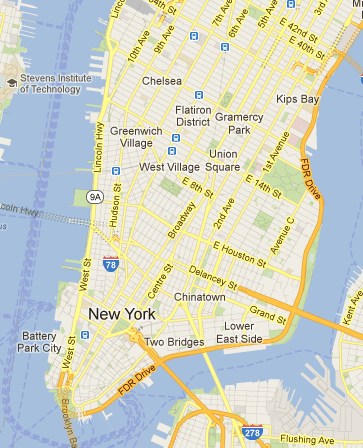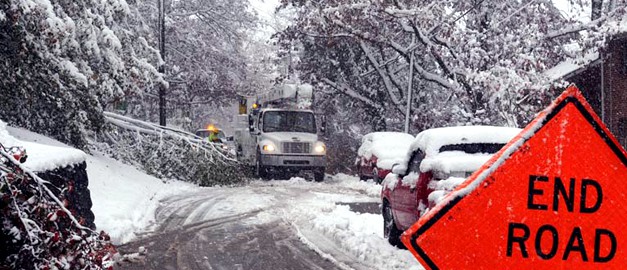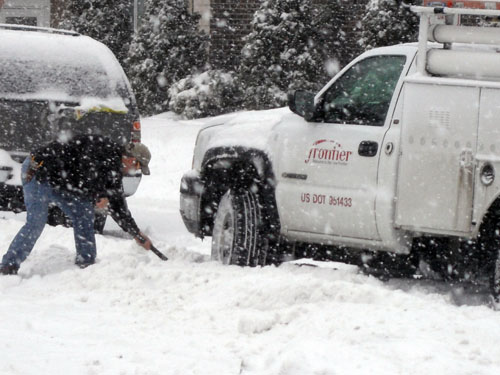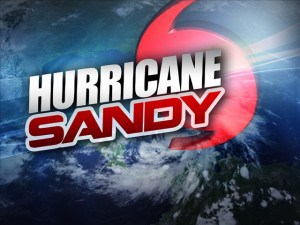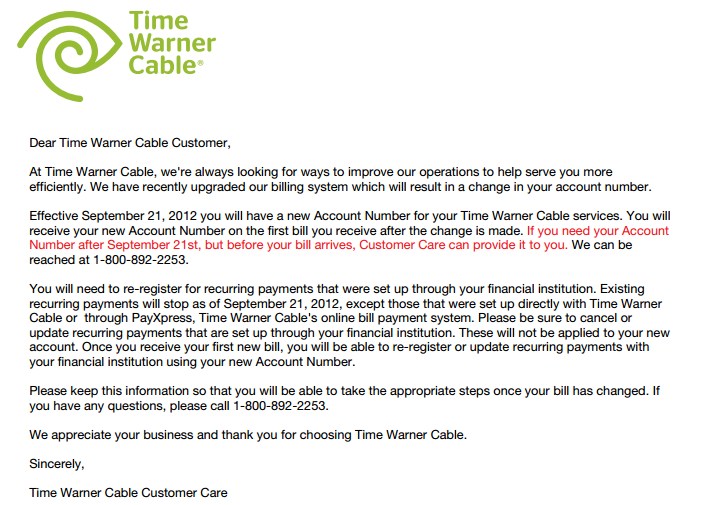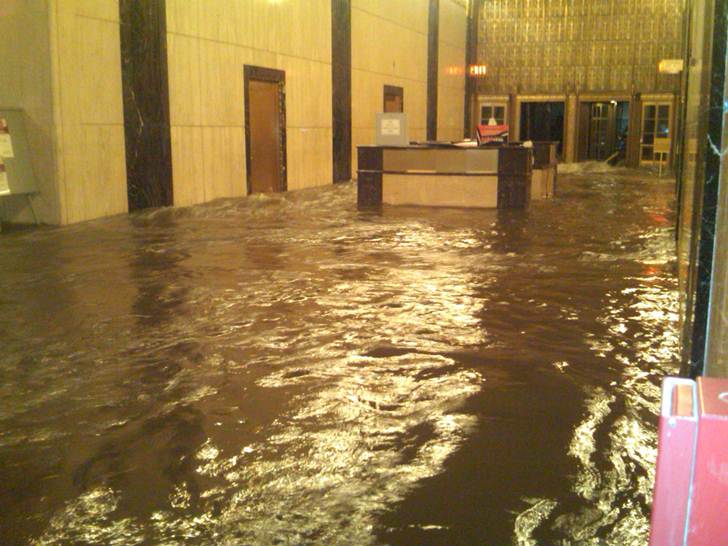
Extensive flooding caused by Hurricane Sandy swamped the ground floor of Verizon’s headquarters at 140 West St. in lower Manhattan.
Verizon Communications, the largest telecommunications company in the northeast, has been trying to assess the widespread damage to its wireline, fiber, and wireless networks but remains hampered by major damage to its own operations centers and leftover flooding in coastal areas.
Verizon’s headquarters in lower Manhattan on West Street had several feet of water on the ground floor Monday night. At noon today, Verizon called conditions below 39th Street in lower Manhattan “bleak” because of flooding. Verizon’s network technical facilities received extensive damage in the area, and some facilities had water high enough in basements to damage backup power equipment. The company spent the last day just pumping flood water out of their facilities in the area and is now bringing in new generators to power buildings and restore service.
The venerable landline, now considered a relic by a growing number of Americans, may prove to be the hardy survivor of Hurricane Sandy, holding up well in areas upstate and in parts of New York City where spotty cell service has left residents doing the unthinkable – lining up in front of working pay phones.
With cell phone batteries all but dead and power restoration likely to take days if not weeks, Verizon’s self-powered landlines that survived the storm are holding up, even if customers’ memories are not.
“The good news is the payphones that are still left are working, the bad news is who can remember anyone’s phone number anymore?” says Stop the Cap! reader Richard, who has been without power since Monday night. “Cell phone contact lists don’t help much until you can recharge your phone.”
Several New Yorkers are joining Richard looking for community centers and public libraries with working electrical outlets to recharge cell phones while catching up with e-mail on computer terminals that still have Internet access. Some boroughs remain virtually cut off from the rest of New York with roads, tunnels, bridges and public transport only gradually reopening on a limited basis.
Verizon’s Satellite Solutions Group is sending several emergency mobile communications vehicles to New Jersey and New York this evening to provide communications services to the impacted region. The disaster recovery fleet is completely self-contained and does not require any commercial power to operate. The mobile vehicles offer voice, data and Internet connectivity as well as charging capabilities for mobile devices.
“Sandy has left a trail of destruction throughout the Mid-Atlantic and Northeast, with historic flooding in New York and New Jersey and a hurricane-fueled snowstorm in southwest Virginia and western Maryland,” said Bob Mudge, president of Verizon’s consumer and mass business division. “We are asking the public to remain focused on staying safe as there may be dangerous conditions such as fallen trees or power lines. Our dedicated employees – from technicians to customer service consultants – run to a crisis and will continue to do what it takes to put customers back in touch.”
For that to happen, Verizon is waiting for electric utilities to get service back up and running. The company suspects most of its problems are related to electric service interruptions that will resolve once power is restored. But in lower Manhattan and along the coastline, more significant damage is likely to take longer to repair.
Verizon facilities in lower Manhattan, Queens and Long Island have received major damage from severe flooding, interrupting commercial power and rendering backup power systems inoperable. In some cases, Verizon teams have not been able to access the sites, due to flooding and safety concerns.
As battery backup and generated power fails, additional central offices could lose service until Verizon crews can reach those facilities. Where flood waters have wreaked havoc with Verizon’s equipment, it could take a week or more to restore service. In such cases, it’s crucial to consider hiring a water damage restoration service to expedite the recovery process. For detailed information on water damage restoration, please see page.
Verizon Wireless service is reportedly in better shape, with 94% of cell sites still working, according to the company.
But with heavy call volumes and interruptions to Verizon’s backhaul connections which connect cell towers to Verizon’s network, having good reception is no guarantee customers will be able to complete calls or receive them.
Many New Yorkers report outgoing calls go nowhere and incoming calls go straight to voicemail, even with phones powered on.
Other Verizon notifications affecting customers across the northeast:
“All circuits are busy” or “Your call cannot be completed at this time”
Some Verizon customers in the Mid-Atlantic and Northeast region of the U.S. may receive a message of “All circuits are busy” or “Your call cannot be completed at this time” when trying to make a call. This is due to an unusually large volume of calls in the network as a result of Hurricane Sandy. Our engineers are working to accommodate this additional call volume. We apologize for any inconvenience this has caused.
Shipment Delays
As storm related transportation disruptions clear, Verizon customers will begin to receive shipments of routers, set top boxes and cabling. However, there may continue to be delays in completing deliveries due to road conditions. We will continue to process orders and ship equipment to our customers as quickly as possible.
Need to Report An Electric Outage or Check on the Status of Repairs in Your Area?
|


 Subscribe
Subscribe